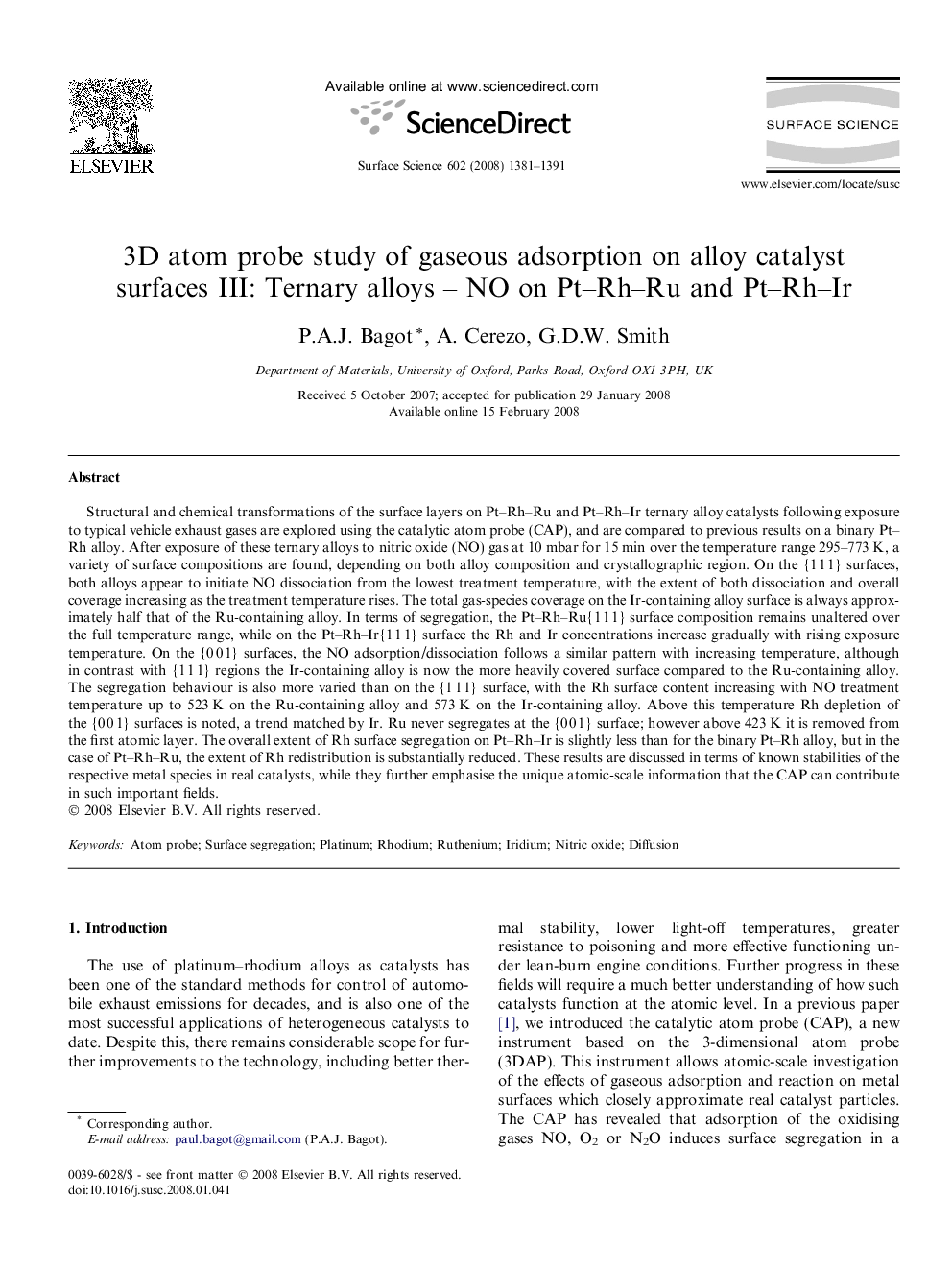| کد مقاله | کد نشریه | سال انتشار | مقاله انگلیسی | نسخه تمام متن |
|---|---|---|---|---|
| 5424723 | 1395834 | 2008 | 11 صفحه PDF | دانلود رایگان |
عنوان انگلیسی مقاله ISI
3D atom probe study of gaseous adsorption on alloy catalyst surfaces III: Ternary alloys - NO on Pt-Rh-Ru and Pt-Rh-Ir
دانلود مقاله + سفارش ترجمه
دانلود مقاله ISI انگلیسی
رایگان برای ایرانیان
کلمات کلیدی
موضوعات مرتبط
مهندسی و علوم پایه
شیمی
شیمی تئوریک و عملی
پیش نمایش صفحه اول مقاله

چکیده انگلیسی
Structural and chemical transformations of the surface layers on Pt-Rh-Ru and Pt-Rh-Ir ternary alloy catalysts following exposure to typical vehicle exhaust gases are explored using the catalytic atom probe (CAP), and are compared to previous results on a binary Pt-Rh alloy. After exposure of these ternary alloys to nitric oxide (NO) gas at 10Â mbar for 15Â min over the temperature range 295-773Â K, a variety of surface compositions are found, depending on both alloy composition and crystallographic region. On the {1Â 1Â 1} surfaces, both alloys appear to initiate NO dissociation from the lowest treatment temperature, with the extent of both dissociation and overall coverage increasing as the treatment temperature rises. The total gas-species coverage on the Ir-containing alloy surface is always approximately half that of the Ru-containing alloy. In terms of segregation, the Pt-Rh-Ru{1Â 1Â 1} surface composition remains unaltered over the full temperature range, while on the Pt-Rh-Ir{1Â 1Â 1} surface the Rh and Ir concentrations increase gradually with rising exposure temperature. On the {0Â 0Â 1} surfaces, the NO adsorption/dissociation follows a similar pattern with increasing temperature, although in contrast with {1Â 1Â 1} regions the Ir-containing alloy is now the more heavily covered surface compared to the Ru-containing alloy. The segregation behaviour is also more varied than on the {1Â 1Â 1} surface, with the Rh surface content increasing with NO treatment temperature up to 523Â K on the Ru-containing alloy and 573Â K on the Ir-containing alloy. Above this temperature Rh depletion of the {0Â 0Â 1} surfaces is noted, a trend matched by Ir. Ru never segregates at the {0Â 0Â 1} surface; however above 423Â K it is removed from the first atomic layer. The overall extent of Rh surface segregation on Pt-Rh-Ir is slightly less than for the binary Pt-Rh alloy, but in the case of Pt-Rh-Ru, the extent of Rh redistribution is substantially reduced. These results are discussed in terms of known stabilities of the respective metal species in real catalysts, while they further emphasise the unique atomic-scale information that the CAP can contribute in such important fields.
ناشر
Database: Elsevier - ScienceDirect (ساینس دایرکت)
Journal: Surface Science - Volume 602, Issue 7, 1 April 2008, Pages 1381-1391
Journal: Surface Science - Volume 602, Issue 7, 1 April 2008, Pages 1381-1391
نویسندگان
P.A.J. Bagot, A. Cerezo, G.D.W. Smith,